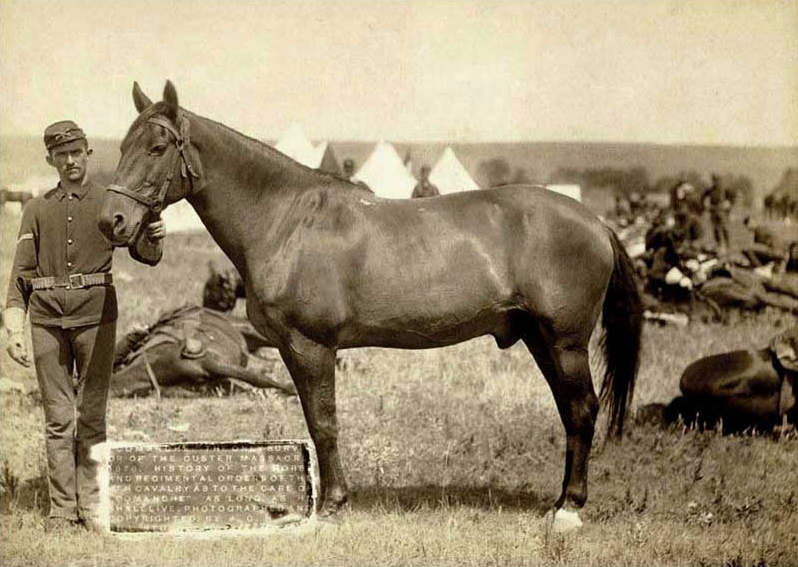About
On June 25, 1876 the five companies of the US 7th Cavalry under the command of Gen. George Armstrong Custer were annihilated by a force of Lakota Sioux and Cheyenne at the Battle of the Little Bighorn. The following day, troops from the remaining companies of the 7th Cavalry discovered the carnage – 210 men lay dead, including their commander, along with dozens of horses. While no US Army soldier survived the engagement, one horse was found alive on the battlefield.
The horse, named Comanche, had belonged Capt. Myles Keough, and had suffered no less than seven bullet wounds during the battle. Though he was heralded as the lone survivor of the battle, many historians believe that as many as 100 horses survived and were either captured or bolted.
After the battle, Comanche was transported to Ft. Abraham Lincoln in the Dakota Territory, and he was officially retired from service in April 1878. As part of his retirement, the commanding officer of the fort ordered that “a special and comfortable stall is fitted up for him, and he will not be ridden by any person whatever, under any circumstances nor will he be put to any kind of work.” The horse was also given the honorary title of “second-in-command” of the 7th Cavalry, and he lived out the rest of his days as a company mascot.
When he died in 1890, he was the first of only two horses in American history ever given a funeral with full military honors. He was not buried, however; instead, his body was sent to the University of Kansas to be stuffed and put on display, where he resides today in the university’s Natural History Museum. In 2005, Comanche was moved to a new exhibit on the museum’s fourth floor after undergoing a complete restoration.
Related Tags
Published
December 5, 2009
Sources
- Stillman, Deanne. "Comanche: The Horse that Survived the Battle of the Little Bighorn." New West, Jen 25, 2007. http://www.newwest.net/topic/article/comanche_the_horse_that_survived_the_battle_of_the_little_bighorn_part_1/C39/L39/
- http://www.nhm.ku.edu/Hdocs/Comanche.html
- Quite offense to the many native Americans who not only lived to tell the story, but whose defendants are now in charge of the national memorial and museum in Montana.






















